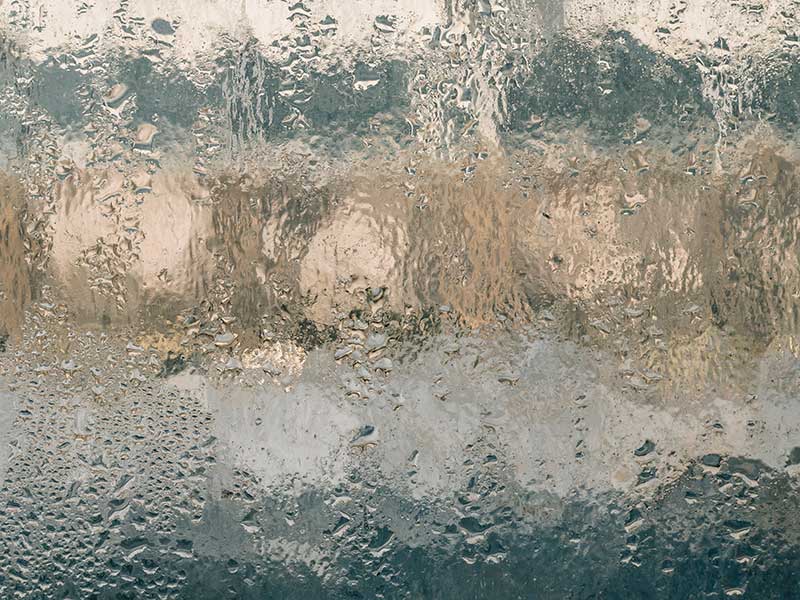The customer service team is always listening, taking notes, and quantifying complaints to ensure our products are continually improved. Due to selling directly to you, the customer, via Amazon, we can use product reviews to help us improve our existing products or help further development of new products.
Table of Contents
When Jack Frost comes visiting this year, he’ll bring with him chilly toes and cold fingers. But that cold stranger may also bring hidden problems to your home in the form of low indoor humidity in winter. Low humidity can bring all sorts of issues that can negatively affect your health and your home.
So how do you know what the optimal indoor humidity in winter is and how do you get the ideal levels of humidity? And what can you do to minimize damage from dry air?
I think thermometers & hygrometers can help you! Let’s follow me to know it!
How does Low Humidity Happen?
Humidity is a measure of the water vapor in the atmosphere. If you live in the South part of the United States, you are intimately familiar with suffocating conditions that come with high humidity and high temperatures. However, as temperatures cool, the humidity drops because cool air holds less water than warm air. It is not that the air is physically holding the air; instead, it is that at higher temperatures the water molecules go into a vapor phase.
What does this mean for your home and family?
Certainly, lower humidity feels better to you when you are doing outside activities, but it doesn’t feel so good to your body when you are stuck inside. There are several factors that affect the percentage of humidity in your house including the amount of insulation you have, the amount of ventilation available, and what climate zone you live in.
Climate zones are places where distinct climates occur. The three main climate zones are the Polar Zone, Temperate Zone, and Tropical Zone.
According to Energy.gov, other climate zones are named for how the weather generally feels. So, there is Hot-Humid, Mixed-Humid, Hot-Dry, Mixed-Dry, Cold, and Very-Cold.
Familiarizing yourself with the climate zone where your home is could help you understand the humidity conditions you may face. Once you understand the climate zone, you can then access how low humidity in the cold will affect yourself and the stuff in your house. Some of the damaging things that happen to body and home include:
- Damaged electronics
- Chipped paint
- Split or cracked wooden components
- Itchy skin
- Dry hair
- Increased sickness
- Nose bleeds
How does ideal indoor humidity in winter affect my health?
We know that in winter we are more apt to get sick. Some of this is because we are indoors together more often and those nasty bugs will spread in close quarters when people cough or sneeze.
But now, experts are also finding it may also be the dryer air that is helping viruses go from one person to another. Scientists studying the flu have found that the virus is both less stable in high humidity and more attracted to water vapor in the air so when it’s humid there is additional water vapor.
With more water vapor, the viruses drop out of the air before they can settle into an unsuspecting person’s respiratory system. Additionally, researchers say, the flu seems to grow better in a respiratory tract that has been dried out by less than ideal indoor humidity winter levels. So, basically, the dryer the air, the easier it is to catch the flu.

How does indoor humidity winter harm my home?
When the humidity is too low, electronics become susceptible to an electrostatic discharge which can, in a word, fry your stuff. This is because static electricity travels faster in dryer air. You know this if you have ever shuffled your stockinged feet over the carpet then touched an unsuspecting sibling to get that jolt and scream.
Something similar happens with your unsuspecting electronics. You may actually see a spark when this tragedy occurs, or you may only notice when it fails to come on.
Along with your devices, other things in your house can be hurt by low humidity too. Wood furniture, wood floors, or even wooden musical instruments can contract in dry air and split or crack. On your walls, paint or wallpaper can see negative effects. Wallpaper can peel while paint can crack and flake in low humidity.
Experts recommend keeping the relative indoor humidity in winter at 45 to 55 percent. There are some more precise guidelines are more exacting outdoor temperatures:
- 20-40 degrees – no more than 40 percent humidity
- 10-20 degrees – no more than 35 percent humidity
- 0-10 – no more than 30 percent humidity
- Below 10 degrees – no more than 25 percent humidity
What else affects humidity levels?
Other factors that influence indoor humidity are the amount of insulation in your home, how you ventilate the home, and how much moisture you generate in the house through cooking, washing, and showering. Insulation and humidity affect one another. Too much humidity will saturate your insulation making it prone to mold and reducing its effectiveness. Conversely, having the correct amount of insulation will help keep humidity levels at an optimum level.
What can I do to protect myself and my home?
So now that we know what damage low humidity can do in the winter, what steps can you take to prevent all this carnage?
After you have made sure you have the correct amount of insulation and that your home is vented correctly, it is recommended you take an additional two-pronged approach to make sure the humidity is at the right levels in your home.
First, install a specialized thermometer and hygrometer, like ThermoPro 2-in-1Temperature and Humidity Monitor.
The devices let you monitor both the temperature and the humidity levels in your home likes an indoor weather station, which can take steps to head off any problems that come with the cold weather and low humidity. It can bring you a lot of benefits on owning a home weather station!
What’s more, you can Know what the conditions put you in charge of maintaining your home and your health in advance and rather than just guessing.
Second, using the humidifier or dehumidifier to control the humidity!
If the indoor humidity is low, you can install a system-wide humidifier in your home, or get several room-sized humidifiers to add water vapor to the air. If the indoor humidity is high, you can use the dehumidifiers to lower the humidity.
With the help of the temperature and humidity monitors and the humidity-control devices, you can stay indoor at the ideal humidity and keep Jack Frost’s antics at bay.









